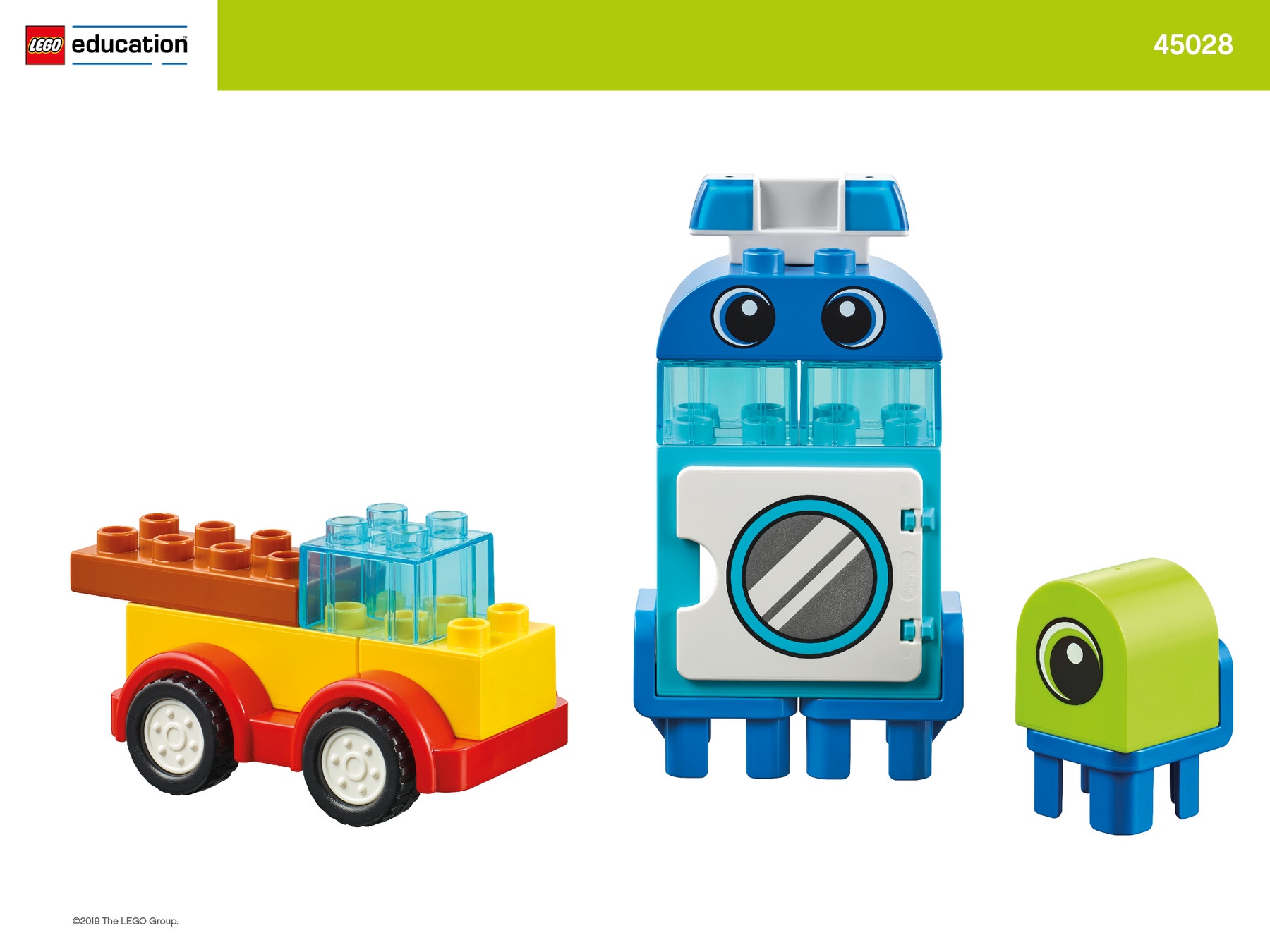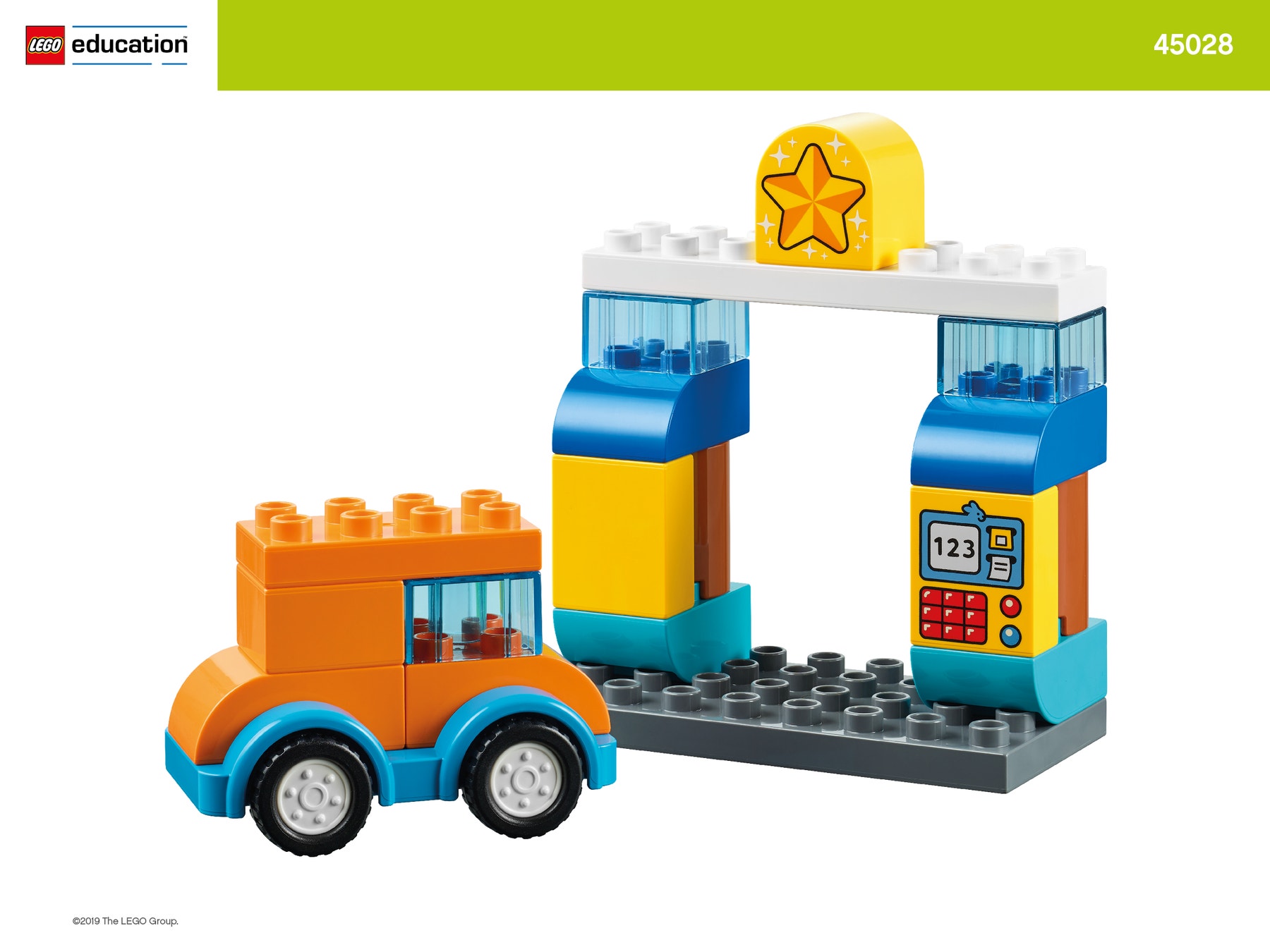A mini market
It's shopping day!!! What do people buy in Rainbow Town?

Prepare
• Make sure that you've visited www.LEGOeducation/start and watched the My XL World onboarding videos.
• Watch the video in the top right corner of this page to get an overview of this lesson.
• Select the inspiration cards you'll need for the lesson.
• Set up a designated space in your classroom that will allow the children to easily build and role-play with their models.
Engage (5 Minutes)
(5 Minutes)
Show the children the inspiration card of the supermarket, and read this short story aloud.
Today, everyone is going shopping because they need to prepare for the school party! Uma and Wei are going to buy food for the party. Zoe and Xavier would like to get some streamers and colorful balloons to decorate the party room. Yasmin and Victor would like to play a guessing game at the party. They want their friends to guess where some of the different foods come from. For example, eggs come from chickens, and juice is made from different types of fruit.
.
Facilitate a quick discussion about shopping. Ask questions, like:
- Do you ever go shopping with your parents? What do they usually buy?
- How does a supermarket checkout work?
- What would you like to buy if you had money? Why would you choose that?
Explore (10 Minutes)
(10 Minutes)
Tell the children that they're going to build one or two things they'd like to sell!
Have them work individually or in pairs to build one or two things they'd like to sell to their friends. Explain that it could be something they'd like to play with, eat, or use.
They can use their imaginations to create new models or use the examples below for guidance.
Explain to the children that they're going to use LEGO® DUPLO® bricks as money to buy and sell their models. Tell them that they can charge a maximum of three LEGO® DUPLO® bricks for each model.
Allow the children 5 minutes to role-play buying and selling their models.
Explain (5 Minutes)
(5 Minutes)
Gather the children together. Ask them to take turns presenting their models, and explaining why they chose to build that model.
Ask the children to think about what they've built and facilitate a discussion by asking guiding questions, like:
- How much does your model cost?
- Why are certain things expensive while others are cheap?
- What's the difference between a good and a service?
Elaborate (20 Minutes, Optional)
(20 Minutes, Optional)
Encourage each child to build a model of a place that sells goods, and a model of a place that provides services.
Have the children take turns using the LEGO® DUPLO® figures to explain what type of goods or services are sold at the places they've built.
Ask guiding questions, like these, to support the children’s building:
- Do you go out to eat with your parents? Where do you go?
- Where do you get your hair cut?
Evaluate (Ongoing throughout the Lesson)
(Ongoing throughout the Lesson)
Evaluate the children’s skills development by observing if they’re:
- Building a foundation for understanding economic concepts
- Adding their own ideas to creative projects and coming up with their own ideas during play
- Playing with other children in small and large groups, and following classroom procedures, game rules, and makes transitions
Differentiation
Simplify this lesson by:
- Assigning each pair of children one model to build
- Running the lesson with a smaller group (i.e., 3-4 children) and providing more support with building
Increase the difficulty by: - Encouraging the children to design a store with a self-checkout machine and explain how it works
Extention (This will extend beyond the 20-minute lesson)
(This will extend beyond the 20-minute lesson)
LANGUAGE ARTS EXTENSION
Ask the children to make signs for the goods and services that are sold in the shops they've built earlier.
Encourage them to use symbols or phonetic spelling to label the items. Have them add prices or "sale" signs.
MATH EXTENSION
Give each child two big LEGO® DUPLO® bricks and four or five small LEGO® DUPLO® bricks to use as "pocket money."
Explain that one big LEGO® DUPLO® brick = two small LEGO® DUPLO® bricks.
Have them try to buy and sell their models, giving back “change” if the buyer doesn’t have the exact amount.



Teacher Support
Children will
Understand the basic concept of economics
Understand how to perform basic calculations
My XL World Set
Inspiration cards